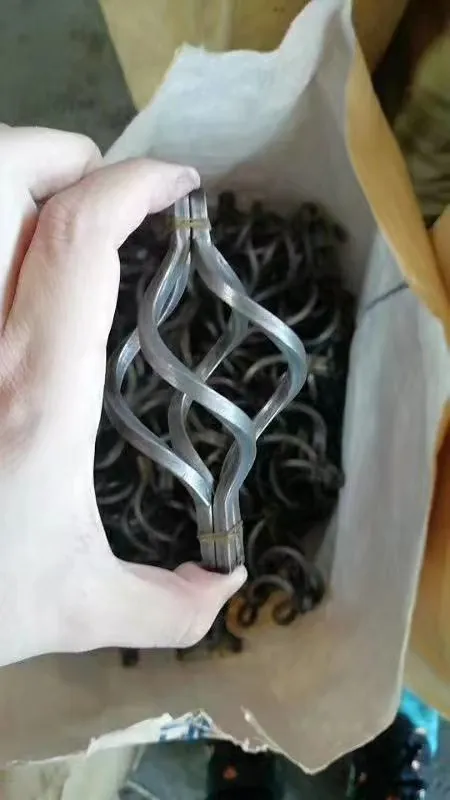aluminum window channel extrusion
Understanding Aluminum Window Channel Extrusion A Comprehensive Overview
Aluminum has established itself as one of the most versatile and widely used materials in the construction and architecture sectors, particularly in window design and fabrication. Among the various forms of aluminum products, aluminum window channel extrusions play a crucial role in enhancing both the functionality and aesthetics of buildings. This article delves into the specifics of aluminum window channel extrusion, exploring its manufacturing process, applications, benefits, and considerations for selection.
What is Aluminum Window Channel Extrusion?
Aluminum extrusion is a manufacturing process where aluminum alloy material is forced through a shaped opening in a die, creating a specific profile. This method allows for the production of complex shapes with continuous lengths. The resulting aluminum window channels are used primarily in window frames and supports, providing a secure fit for glass panes while offering structural integrity.
The Manufacturing Process
The extrusion process for aluminum window channels involves several key steps
1. Material Selection The process begins with the selection of high-quality aluminum alloys that offer desirable properties, such as strength, malleability, and resistance to corrosion. Common alloys used for window channels are 6063 and 6061, known for their excellent extrudability.
2. Heating and Extrusion The selected aluminum is heated to a malleable state and then forced through the die using a hydraulic press. This forms the aluminum into the desired channel shape.
3. Cooling and Aging After extrusion, the material is cooled and then subjected to aging, which enhances its strength and durability. This process can be done through natural aging at room temperature or artificial aging in an oven.
4. Finishing and Anodizing Post-extrusion, the channels can undergo various finishing treatments, including anodizing, powder coating, or polishing. Anodizing, in particular, enhances corrosion resistance and allows for aesthetic customization through color variations.
Applications of Aluminum Window Channels
Aluminum window channels are widely used in residential, commercial, and industrial construction for their durability and lightweight properties. Here are some key applications
- Window Frames The primary use of aluminum window channels is in the creation of window frames
. They provide the necessary support and structure for glass, allowing for a variety of window styles, including sliding, casement, and awning windows.- Curtain Walls In commercial buildings, aluminum window channels are essential for curtain wall systems. These systems consist of a lightweight aluminum frame that supports glass façades, providing a sleek, modern appearance while minimizing structural load.
- Partition Walls Aluminum extrusions can also be used in interior partitions, where lightweight and sturdy frames are required without compromising design or function.
aluminum window channel extrusion

Benefits of Aluminum Window Channels
Opting for aluminum window channel extrusions presents numerous advantages
- Lightweight Yet Strong Aluminum is significantly lighter than steel, making it easier to handle during installation while still providing robust structural support.
- Corrosion Resistance The natural corrosion resistance of aluminum, further enhanced through anodizing, ensures longevity, especially in outdoor applications where exposure to the elements is inevitable.
- Energy Efficiency Modern aluminum extrusions are designed to accommodate thermal breaks, significantly improving energy efficiency in window installations. This reduces heat transfer, thus cutting energy costs.
- Design Flexibility The extrusion process allows for a wide variety of shapes and sizes, enabling architects and builders to achieve specific aesthetic and functional requirements.
Considerations for Selection
When choosing aluminum window channel extrusions, several factors should be considered
- Alloy Type Select an alloy that suits the specific environmental conditions and performance requirements of the project.
- Thermal Performance Look for extrusions that incorporate thermal breaks for improved energy efficiency.
- Finish The choice of finish—be it anodized, powder-coated, or polished—affects not only aesthetics but also the performance in terms of durability and maintenance requirements.
- Supplier Quality Ensure that the supplier specializes in high-quality aluminum extrusions, as this can greatly affect the overall performance and reliability of the window channels.
Conclusion
Aluminum window channel extrusions are integral components in modern architecture, combining strength, lightweight properties, and versatility. Their use in various applications enhances not only the functionality of buildings but also their aesthetic appeal. By understanding the manufacturing process, benefits, and selection considerations, architects and builders can make informed decisions that contribute to successful and sustainable construction projects. As the industry continues to evolve, aluminum window channels will undoubtedly remain a staple in innovative design and construction methodologies.
-
Wrought Iron Components: Timeless Elegance and Structural StrengthNewsJul.28,2025
-
Window Hardware Essentials: Rollers, Handles, and Locking SolutionsNewsJul.28,2025
-
Small Agricultural Processing Machines: Corn Threshers, Cassava Chippers, Grain Peelers & Chaff CuttersNewsJul.28,2025
-
Sliding Rollers: Smooth, Silent, and Built to LastNewsJul.28,2025
-
Cast Iron Stoves: Timeless Heating with Modern EfficiencyNewsJul.28,2025
-
Cast Iron Pipe and Fitting: Durable, Fire-Resistant Solutions for Plumbing and DrainageNewsJul.28,2025
-
 Wrought Iron Components: Timeless Elegance and Structural StrengthJul-28-2025Wrought Iron Components: Timeless Elegance and Structural Strength
Wrought Iron Components: Timeless Elegance and Structural StrengthJul-28-2025Wrought Iron Components: Timeless Elegance and Structural Strength -
 Window Hardware Essentials: Rollers, Handles, and Locking SolutionsJul-28-2025Window Hardware Essentials: Rollers, Handles, and Locking Solutions
Window Hardware Essentials: Rollers, Handles, and Locking SolutionsJul-28-2025Window Hardware Essentials: Rollers, Handles, and Locking Solutions -
 Small Agricultural Processing Machines: Corn Threshers, Cassava Chippers, Grain Peelers & Chaff CuttersJul-28-2025Small Agricultural Processing Machines: Corn Threshers, Cassava Chippers, Grain Peelers & Chaff Cutters
Small Agricultural Processing Machines: Corn Threshers, Cassava Chippers, Grain Peelers & Chaff CuttersJul-28-2025Small Agricultural Processing Machines: Corn Threshers, Cassava Chippers, Grain Peelers & Chaff Cutters












